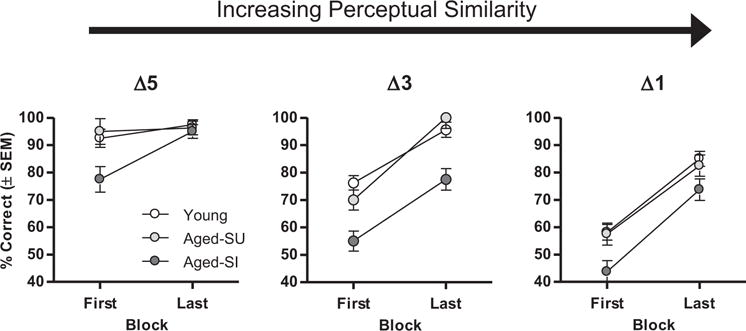Fig. 8.

Effects of perceptual similarity and cognitive subgroup on olfactory discrimination learning rate. Graphs show data from the first and last blocks of trials in the acid chemical series in Experiment 2, plotted as a function of cognitive subgroup (young, aged spatially unimpaired (Aged-SU), and aged spatially impaired (Aged-SI)). Δ5, Δ3, and Δ1 refer to differences of 5, 3, and 1 carbon atoms between the 2 odorants in each problem. Aged spatially impaired rats performed worse than the other 2 groups, but on Δ3 and Δ1 discriminations, their rates of acquisition (slopes of the lines from first to last block) did not differ. Acquisition rates did differ on the Δ5 problem, likely due to a ceiling effect on task performance. Abbreviation: SEM, standard error of the mean.
